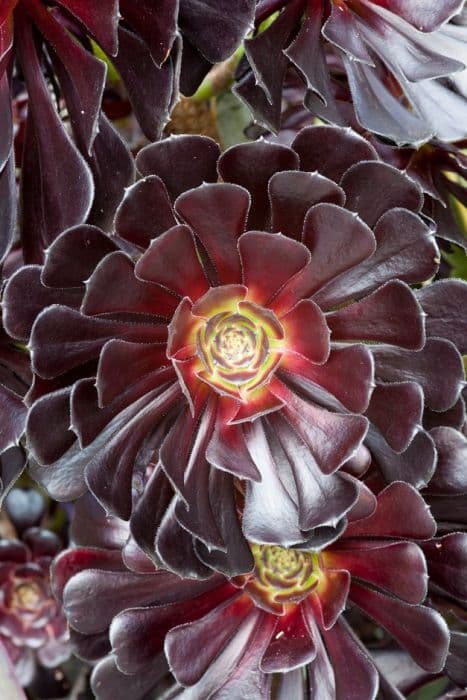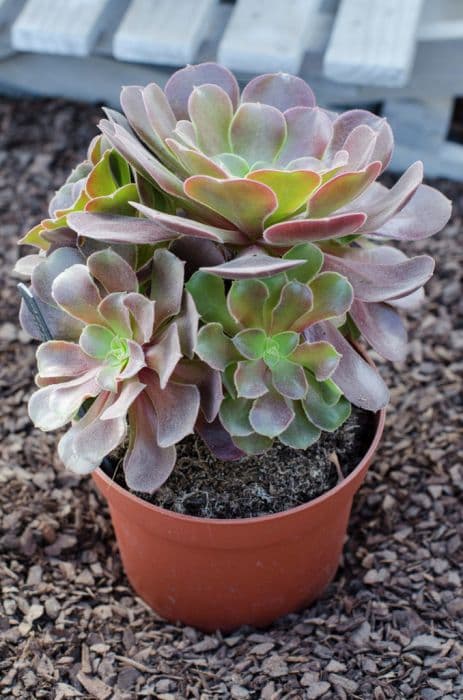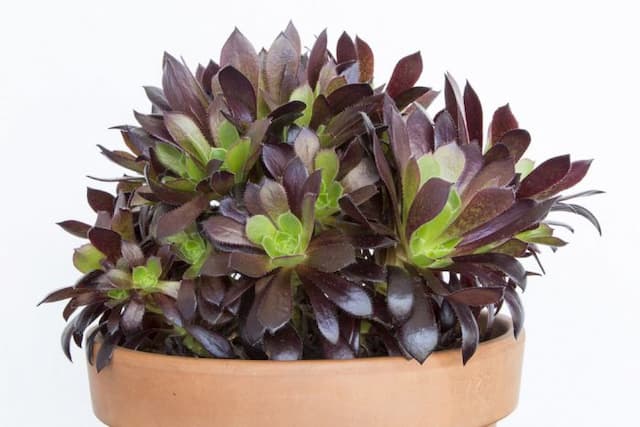Angelina Stonecrop Sedum rupestre 'Angelina'











ABOUT
Sedum 'Angelina' is a vibrant and eye-catching plant known for its unique foliage and sprawling growth habit. The leaves are a striking chartreuse to golden-yellow color that can take on a more orange or reddish hue in the cooler seasons or when exposed to full sunlight. Individual leaves are small, fleshy, and needle-like, creating a texture that is both fine and dense. This plant produces star-shaped, yellow flowers that bloom above the foliage in clusters, adding to its ornamental appeal. It is a hardy, low-maintenance plant often used to add a pop of color in rock gardens, containers, and as ground cover.
About this plant
 Names
NamesFamily
Crassulaceae
Synonyms
Angelina Stonecrop, Angelina Sedum, Golden Sedum
Common names
Sedum reflexum 'Angelina', Petrosedum reflexum 'Angelina', Sedum rupestre 'Angelina'
 Toxicity
ToxicityTo humans
The Angelina Stonecrop is not considered toxic to humans. However, as with any plant, individuals might have varying sensitivities, and it is generally not recommended to ingest plants that are not explicitly intended for human consumption. If accidentally ingested in small quantities, it is unlikely to cause harm, but consuming larger amounts may cause mild gastrointestinal upset due to the plant’s fibrous material and compounds. Always consult a medical professional if you suspect poisoning or have adverse reactions after contact or ingestion of any plant material.
To pets
The Angelina Stonecrop is generally recognized as non-toxic to pets, including cats and dogs. If your pet happens to consume a small amount, it is unlikely to lead to poisoning. However, pets can sometimes have individual reactions or allergies to plants, which could potentially cause mild digestive upset. If you notice any unusual symptoms after your pet has consumed this succulent, it's always a good idea to consult your veterinarian.
 Characteristics
CharacteristicsLife cycle
Perennials
Foliage type
Evergreen
Color of leaves
Yellow-green
Flower color
Yellow
Height
6 inches (15 cm)
Spread
2 feet (60 cm)
Plant type
Succulent
Hardiness zones
5
Native area
Europe
Benefits
 General Benefits
General Benefits- Easy to Grow: Sedum 'Angelina' is known for its hardiness and ease of cultivation, making it suitable for gardeners of all skill levels.
- Drought Tolerant: Once established, it requires little water, thriving in dry conditions where other plants may struggle.
- Attracts Pollinators: The flowers of 'Angelina' sedum attract bees, butterflies, and other pollinators, supporting local ecosystems.
- Low Maintenance: This plant requires minimal care, with no need for regular fertilization or pruning.
- Ground Cover: It spreads quickly, covering the ground and reducing weed growth with its dense foliage.
- Soil Erosion Control: Its mat-forming habit helps stabilize soil on slopes and prevent erosion.
- Year-Round Interest: 'Angelina' offers vibrant yellow-green foliage that turns orange to reddish in the fall, creating seasonal interest in the landscape.
- Versatile: Suitable for rock gardens, containers, borders, and as a filler plant in mixed plantings.
- Cold Hardy: It can survive in cold climates, enduring frost and snow with little to no damage.
- Deer Resistant: Typically not favored by deer, 'Angelina' is less likely to be damaged by wildlife browsing.
 Medical Properties
Medical PropertiesThis plant is not used for medical purposes.
 Air-purifying Qualities
Air-purifying QualitiesThis plant is not specifically known for air purifying qualities.
 Other Uses
Other Uses- Sedum rupestre 'Angelina', often known as stonecrop, can be planted on green roofs due to its drought tolerance and hardiness, providing insulation and habitat for wildlife.
- The dense mat of stonecrop can be used to suppress weeds in a garden, as it leaves little room for unwanted plants to grow.
- Stonecrop is suitable as a ground cover along walkways or between stepping stones, tolerating light foot traffic and adding texture.
- It can be used in hanging baskets or container gardens for its cascading habit and vibrant color, especially in sunny locations.
- Stonecrop can be used to stabilize soil on slopes or embankments because its root system helps to prevent erosion.
- Its succulent leaves can serve as a moisture indicator in gardens, as they become plump when well-watered and begin to wrinkle when dry.
- Stonecrop is sometimes used as a living mulch that retains soil moisture and temperature while adding visual interest to the garden.
- In miniature or fairy gardens, stonecrop serves as a low-maintenance plant resembling small shrubs or trees, adding to the whimsical aesthetic.
- The plant can be incorporated into wildlife gardens to attract pollinators like bees and butterflies, which are drawn to its flowers.
- During the holiday season, stonecrop can be used in festive arrangements or wreaths due to its evergreen foliage and bright color.
Interesting Facts
 Feng Shui
Feng ShuiThe Sedum 'Angelina', commonly referred to as 'Angelina' stonecrop, is not commonly associated with Feng Shui practice.
 Zodiac Sign Compitability
Zodiac Sign CompitabilityThe Sedum 'Angelina' is not used in astrology practice.
 Plant Symbolism
Plant Symbolism- Resilience: Angelina Stonecrop is known for its tough, forgiving nature, symbolizing the ability to endure and thrive in harsh conditions.
- Adaptability: This plant can adapt to various environments, representing flexibility and the capacity to thrive in different situations.
- Longevity: With its perennial characteristics, Angelina Stonecrop conveys the symbolism of long life and immortality.
- Prosperity: Its vigorous growth habit and spreading nature symbolize abundance and prosperity.
- Protection: Angelina Stonecrop has thick, succulent leaves, which can symbolize a protective barrier or a shield against adversity.
 Water
WaterAngelina Stonecrop prefers a well-draining soil and does not require frequent watering. It's best to water this succulent plant deeply but infrequently, allowing the soil to dry out completely between waterings. During the growing season in spring and summer, you might water it once every 1-2 weeks with approximately 1 gallon per square yard, depending on the climate and weather conditions. Reduce watering in the fall and water sparingly in winter, when the plant is dormant, possibly to just once a month or less, depending on soil moisture.
 Light
LightAngelina Stonecrop thrives in full sunlight where it receives at least 6 hours of direct sunlight daily. It is well-suited for a sunny spot in the garden or near a south-facing window if potted indoors. Partial shade is acceptable, especially in very hot climates, but full sun encourages the best foliage color and growth.
 Temperature
TemperatureAngelina Stonecrop is a hardy succulent able to withstand a wide range of temperatures, from as low as -30°F in the winter to highs well above 90°F in the summer. Its ideal growing temperature is between 65°F and 75°F. Avoid placing it in areas where winter temperatures consistently fall below -30°F without protective measures like mulch.
 Pruning
PruningPruning Angelina Stonecrop isn't usually necessary, but it can be done to maintain shape or control spread. Trimming back the tips after flowering encourages a denser growth habit. The best time for pruning is in the late winter or early spring before new growth starts. Occasionally, you may want to trim away any dead or damaged foliage to keep the plant looking its best.
 Cleaning
CleaningAs needed
 Soil
SoilAngelina Stonecrop thrives in well-draining soil with a gritty composition, such as a mix of coarse sand, peat, and perlite. The ideal pH for this plant is slightly acidic to neutral, ranging from 6.0 to 7.5. Provide excellent drainage to prevent root rot.
 Repotting
RepottingAngelina Stonecrop does not require frequent repotting and can usually be done every 2-3 years or when it outgrows its container. Spring is the best time for repotting to give the plant time to establish before winter.
 Humidity & Misting
Humidity & MistingAngelina Stonecrop is tolerant of a wide range of humidity levels but prefers a drier climate. It does well in typical outdoor humidity and does not require any special humidity adjustments.
 Suitable locations
Suitable locationsIndoor
Place in bright light, water sparingly.
Outdoor
Full sun, well-draining soil, minimal care.
Hardiness zone
3-11 USDA
 Life cycle
Life cycleThe life of Sedum rupestre 'Angelina', commonly known as 'Angelina' stonecrop, begins with seed germination when warm temperatures and moisture trigger the development of a new plant. The seedlings will grow roots and shoots, eventually forming rosettes of needle-like, succulent leaves that are bright yellow to green in color. The plant enters a vegetative stage where it matures and spreads primarily through creeping stems that root at the nodes, forming dense mats of foliage. During the flowering stage, in summer, clusters of star-shaped, yellow flowers emerge, attracting pollinators such as bees and butterflies. After pollination, the flowers develop into small, capsule-like fruits which release seeds when mature, thus propagating the next generation. In winter, 'Angelina' stonecrop becomes dormant, with some leaves often taking on an orange or reddish tinge, although in milder climates it may retain its foliage year-round.
 Propogation
PropogationPropogation time
Spring-Early Summer
The Stonecrop 'Angelina' is effectively propagated through stem cuttings, the most popular method for this succulent. This process can be done during the spring or early summer when the plant is actively growing. To propagate Stonecrop 'Angelina', one simply needs to take a healthy stem cutting about 3-4 inches (about 7.5-10 cm) long, let it callous over for a day or two to prevent rotting, and then plant it in well-draining soil. It is important to keep the soil lightly moist until roots have established. Once the cutting has taken root and new growth begins to appear, watering can be reduced as with mature plants. This method is favored for its simplicity and high success rate.









